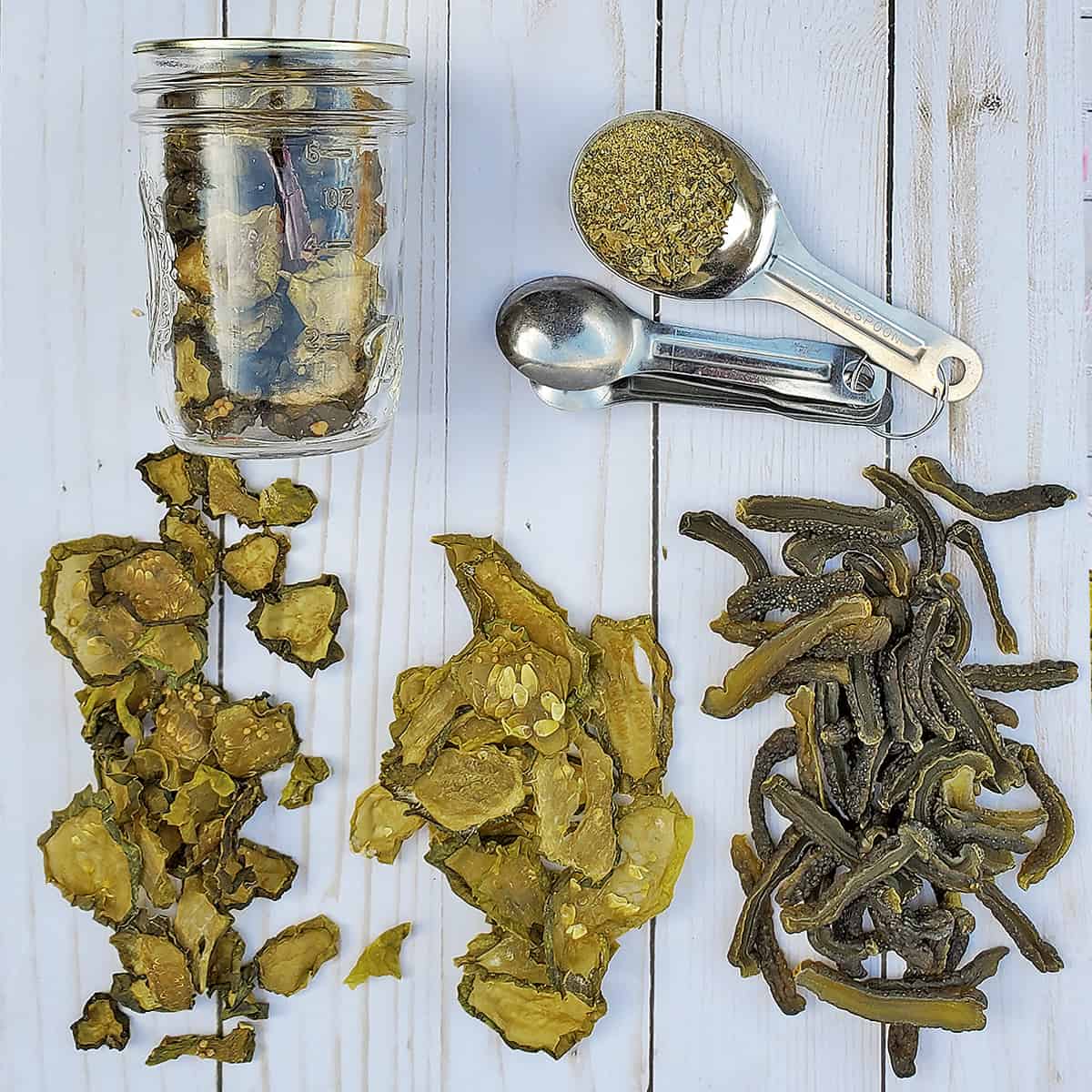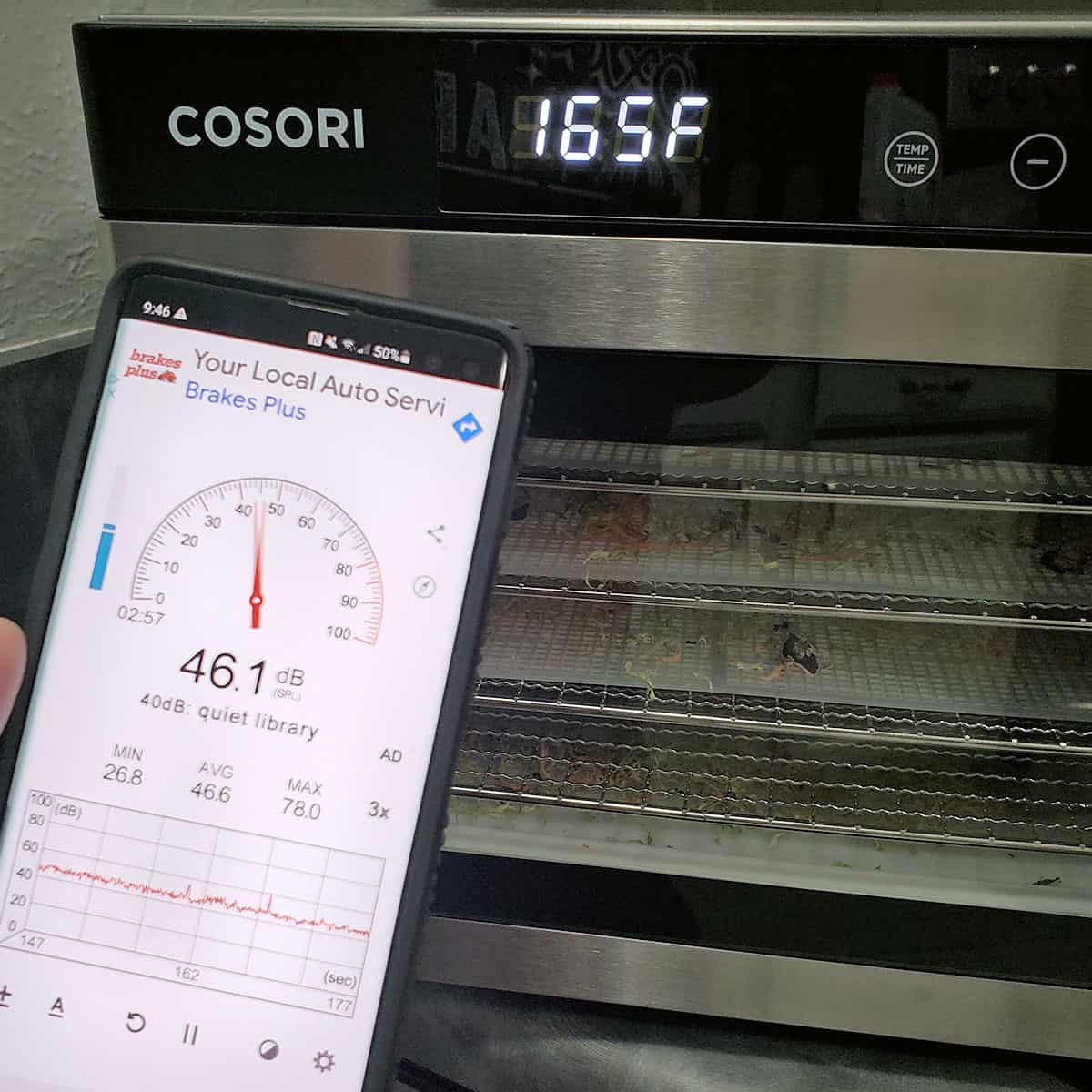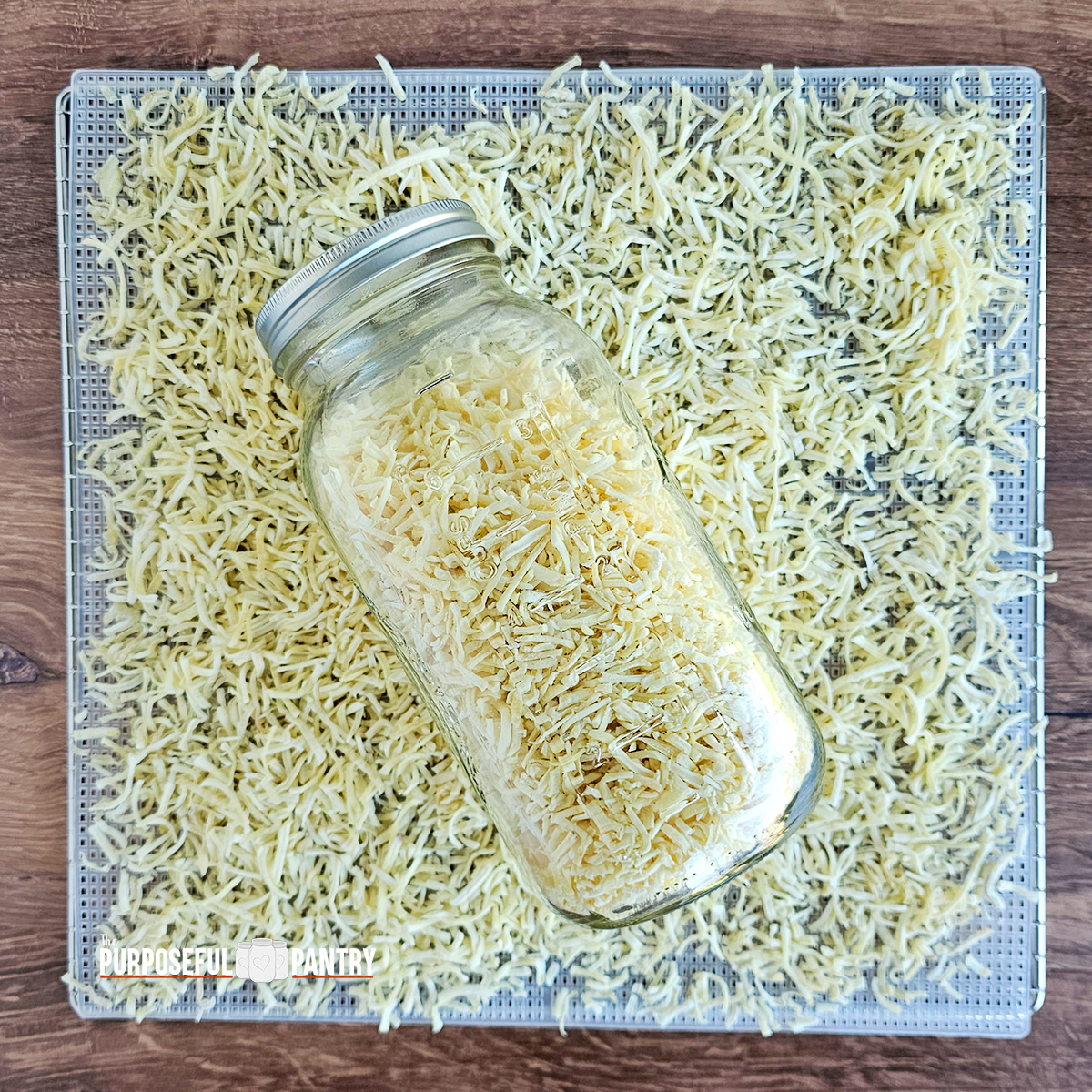How to Dehydrate Olives
Dehydrating olives make a perfect addition to trail mixes for backpacking and hiking treks and create an exciting snack for the pantry.
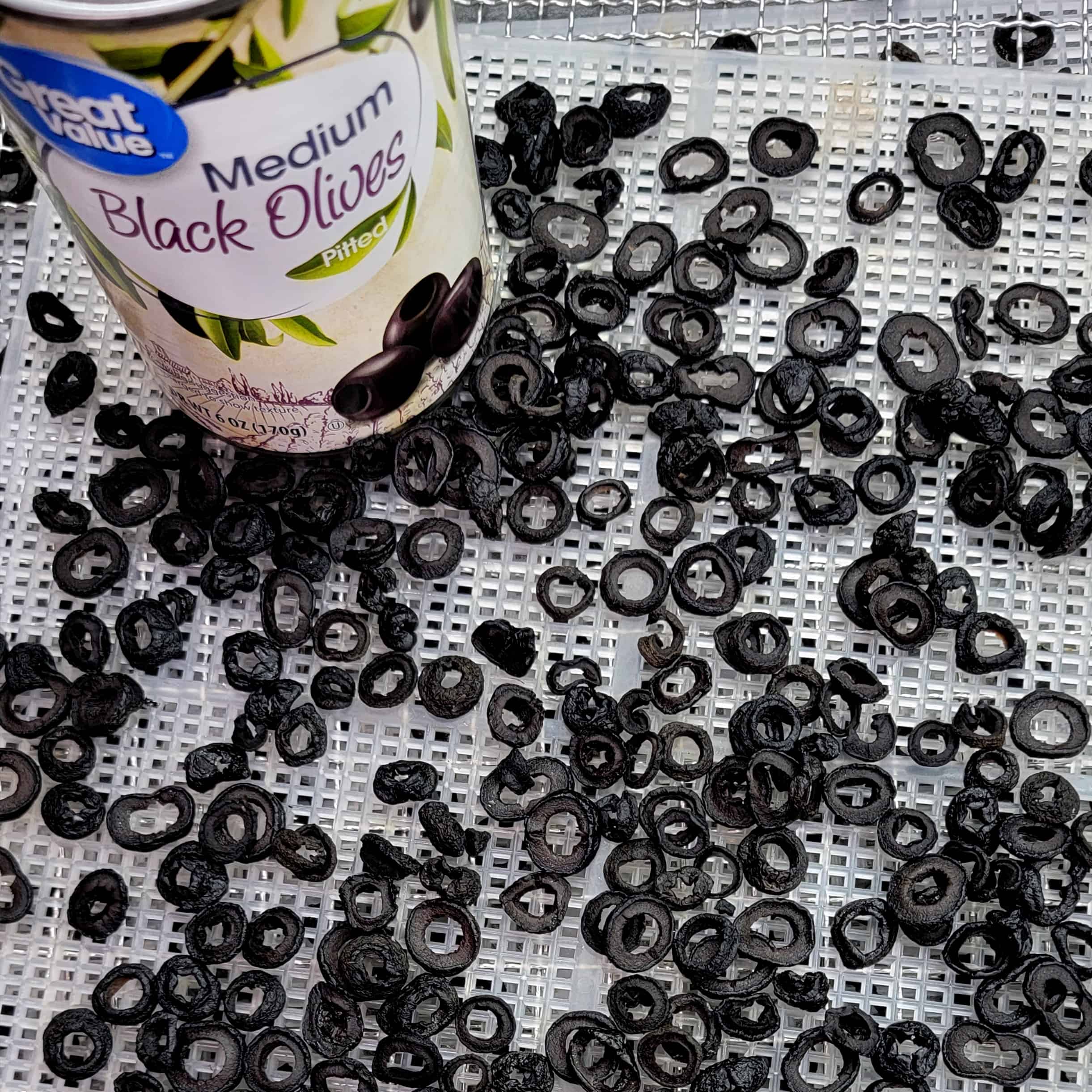
And using canned olives makes this a perfect beginner’s dehydrating project that takes little time! It’s a perfect project for those winter months when you don’t have access to fresh produce!
But why you ask? Because you can!!
The crunchy, salty treats are great for trail mixes or to make an olive powder that is perfect for a tangy, salty dip!
Dehydrating is not typically something recommended as a food preservation method of olives as it doesn’t extend the shelf-life (see notes on fat content below). But it does create something new and exciting from olives that you need to try!
Kinds of Olives to Use
Any olive can be used to dehydrate, though pre-brined olives found in your local grocery store’s olive bar or the canned vegetable aisle work best. If the olives you are interested in are packaged in oil, they will not make great candidates for dehydrating.
- Green Olives (a little less ripe – tangier flavor)
- Black Olives
- Kalamata Olives
- Stuffed olives – as long as it is pimento (a kind of pepper) and not cheese, they are fine to use.
How to Dehydrate Olives
Dehydrating olives that have been canned or brined (fresh from an olive or salad bar) is as easy as rinse, cut, dry, repeat!
Step 1: Prepare
Drain into a colander and rinse to remove as much liquid as possible. This is a very salty curing brine.
Step 2: Slice
Cut in half or thirds if not already pre-sliced and place onto dehydrator trays. Use mesh to ensure that the pieces don’t fall through.
Step 3: Dehydrate
Set the dehydrator to 145°F/60°C to dry for 8-15 hours, depending on how you cut the olives and how tightly you packed them onto the trays.
Step 4: Dryness Test
Test for dryness. Allow the samples to cool completely and break easily with no signs of moisture.
- Place dried food into a jar to allow movement. Do not add moisture absorbers or any other desiccant.
- Shake once a day for 5-7 days.
- Look for signs of sticking, clumping, or moisture buildup.
- If you have clumping or sticking to the side of a jar, if it is removed with a gentle shake, it is fine.
- If it takes significant shaking to remove it or break it up, place back into the dehydrator to dry more.
- If you see mold of any kind, throw food away and sanitize the jar.
- Look for signs of sticking, clumping, or moisture buildup.
- Once complete, store in an airtight container in a dark, cool, dry place if possible.
Step 6: Store
After conditioning, store olive pieces in an airtight container for up to three months. Optimally, they should be stored in the freezer as the fats make them not reliably shelf-stable for long-term storage.
Storage Tip
While olives are naturally full of fat, which can turn rancid over time on a pantry shelf, it is fine to pull them out for a backpacking/hiking meal and have them on a trip for a few weeks.
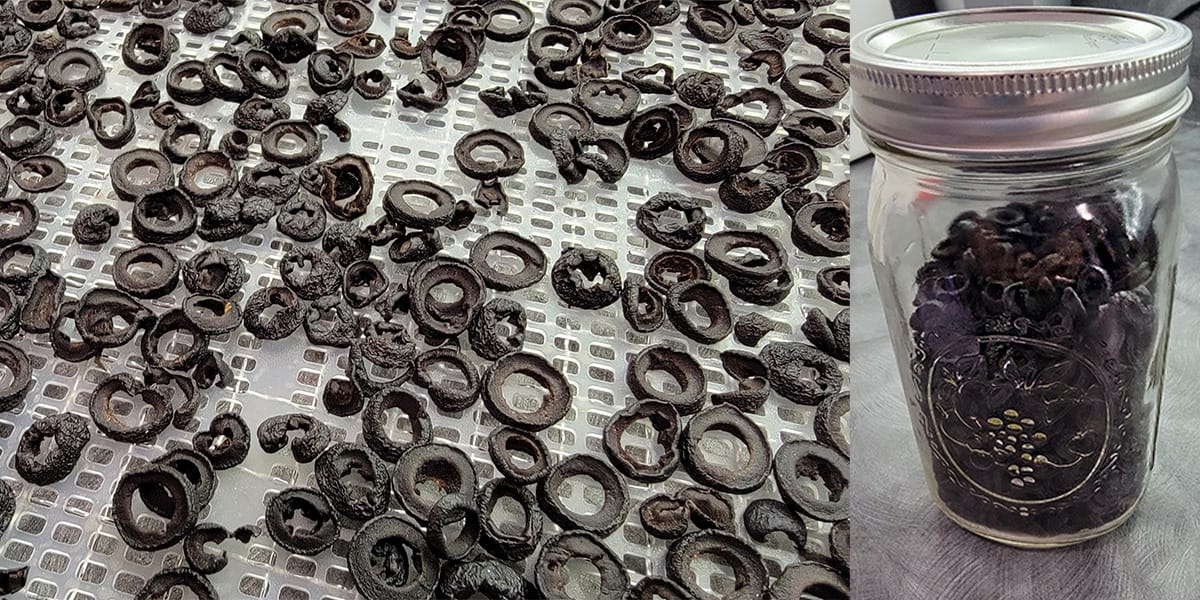
Oven Directions:
- Place olive slices onto a parchment paper-lined baking sheet. It helps to use a cooling rack on top of the baking sheet to keep the olive pieces from touching the hot surface of the baking sheet.
- Dry at 170°C/76°C for 3-6 hours.
- Use a wooden spoon to mix them up if they seem to be sticking.
- Dry until crispy
- Store in an airtight container.
Oven Tip: Use a low temperature in your oven. You can prop the door open with an oven-safe silicone mitt or spoon to help reduce the heat if your oven runs hot. But please be safe with children or mobility-impaired individuals.
How to Dehydrate Fresh Olives
Fresh off the tree olives need to be cured before being dehydrating.
- Pit (this cherry pitter I love using for dehydrated cherries will work great).
- Boil in water for three minutes
- Brine in 1 gallon of water to 1 pound of salt for three days.
- Slice into coins
- Dry at 145°F/60°C for 8-15 hours
- Condition
- Store in an airtight container for up to three months. Stick it in the freezer if you intend to use it longer.
Ways to Use Dried Olives
- Trail mix – create a trail mix with grains of your choice, nuts, olives, etc, to give you a sweet and salty treat.
- Put pieces into your favorite potato salad as a salty, crunchy component.
- Powdered Olive dip for crudités, chips, or sandwiches.
- Crush into pieces and use as a topping for pasta salads, chicken salads, or pizza.
- Rehydrate in a little simmering oil with garlic, onions, or other seasonings of your choice. Then use it in some of your favorite dishes. Or simply use some boiling water for a quick rehydration for cooking with.
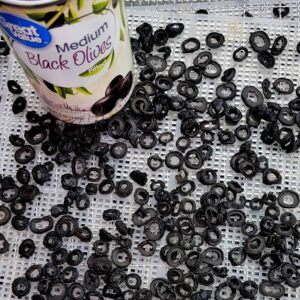
Dehydrate Olives
Equipment
Ingredients
- Olives Use canned or deli bar olives
Instructions
- Drain into a colander and rinse to remove as much brine as possible.
- Slice to make coins of about 1/8-1/4" slices, if not already pre-sliced.
- Place onto dehydrator trays. Use mesh to ensure that the pieces don't fall through.
- Set the dehydrator to 145°F/60°C to dry for 8-15 hours, depending on how you cut the olives and how tightly you packed them onto the trays.
- Test for dryness. Allow the samples to cool completely and break easily with no signs of moisture.
- Condition
- Store in an airtight container for up to three months. Place in freezer if storing longer.
Video
Darcy’s Tips
CONDITION
Don’t miss this important step! Conditioning allows you to catch any areas of moisture before they turn into mold.- Simply shake the jar once a day for five days to watch for signs of sticking, moisture buildup, or mold.
- If you see sticking or moisture, put the carrots back into the dehydrator to dry more. If you see mold, toss.
OVEN DIRECTIONS:
- Place olive slices onto a parchment paper-lined baking sheet. It helps to use a cooling rack on top of the baking sheet to keep the olive pieces from touching the hot surface of the baking sheet.
- Dry at 170°C/76°C for 3-6 hours.
- Use a wooden spoon to mix them up if they seem to be sticking.
- Dry until crispy
- Store in an airtight container.
How to Make Olive Powder
- Place olive pieces into a coffee grinder or bullet blender.
- Pulse until completely chopped up.
- Run for about 20 seconds to get full powder.
- Allow to cool.
- Use within a few days.
Nutrition
Nutritional information is an estimation only. Nutrient information for dehydrated foods is based on fresh. Use 1/4 of the servicing size for the same nutrient information. Thus 1 Cup of fresh fruit has the same sugars as 1/4 dried.
©ThePurposefulPantry. Photographs and content are copyright protected. Sharing of this recipe’s link is both encouraged and appreciated. Copying and/or pasting full recipes to any social media is strictly prohibited.

